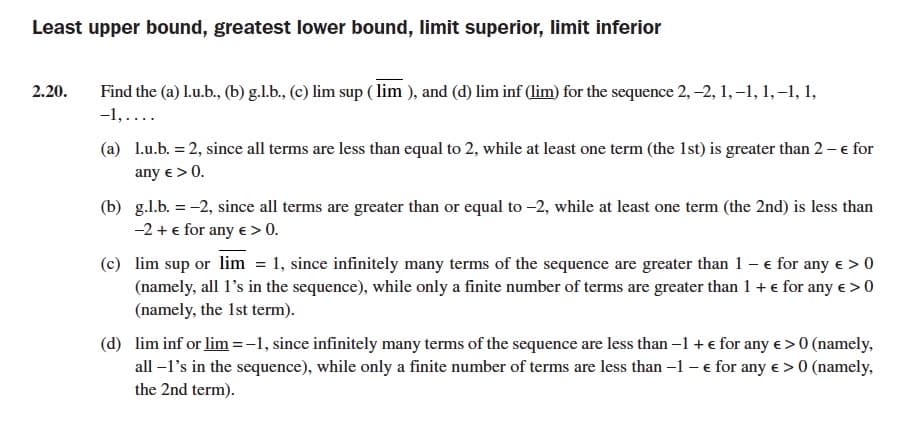my professor says I have to explain the steps in the solved problems in the picture. Not just copy eveything down from the text.
my professor says I have to explain the steps in the solved problems in the picture. Not just copy eveything down from the text.
Algebra & Trigonometry with Analytic Geometry
13th Edition
ISBN:9781133382119
Author:Swokowski
Publisher:Swokowski
Chapter10: Sequences, Series, And Probability
Section10.1: Infinite Sequences And Summation Notation
Problem 74E
Related questions
Concept explainers
Equations and Inequations
Equations and inequalities describe the relationship between two mathematical expressions.
Linear Functions
A linear function can just be a constant, or it can be the constant multiplied with the variable like x or y. If the variables are of the form, x2, x1/2 or y2 it is not linear. The exponent over the variables should always be 1.
Question
2.20) my professor says I have to explain the steps in the solved problems in the picture. Not just copy eveything down from the text.

Transcribed Image Text:Least upper bound, greatest lower bound, limit superior, limit inferior
2.20.
Find the (a) L.u.b., (b) g.l.b., (c) lim sup ( lim ), and (d) lim inf (lim) for the sequence 2, -2, 1,-1, 1, –1, 1,
-1,....
(a) 1.u.b. = 2, since all terms are less than equal to 2, while at least one term (the 1st) is greater than 2 – e for
any e > 0.
(b) g.l.b. = -2, since all terms are greater than or equal to -2, while at least one term (the 2nd) is less than
-2 + e for any e > 0.
(c) lim sup or lim = 1, since infinitely many terms of the sequence are greater than 1 - e for any e > 0
(namely, all l's in the sequence), while only a finite number of terms are greater than 1 + e for any e >0
(namely, the 1st term).
(d) lim inf or lim =-1, since infinitely many terms of the sequence are less than –1 + e for any e > 0 (namely,
all –l's in the sequence), while only a finite number of terms are less than -1 - e for any e > 0 (namely,
the 2nd term).
Expert Solution
This question has been solved!
Explore an expertly crafted, step-by-step solution for a thorough understanding of key concepts.
Step by step
Solved in 2 steps with 2 images

Knowledge Booster
Learn more about
Need a deep-dive on the concept behind this application? Look no further. Learn more about this topic, advanced-math and related others by exploring similar questions and additional content below.Recommended textbooks for you

Algebra & Trigonometry with Analytic Geometry
Algebra
ISBN:
9781133382119
Author:
Swokowski
Publisher:
Cengage

Algebra & Trigonometry with Analytic Geometry
Algebra
ISBN:
9781133382119
Author:
Swokowski
Publisher:
Cengage